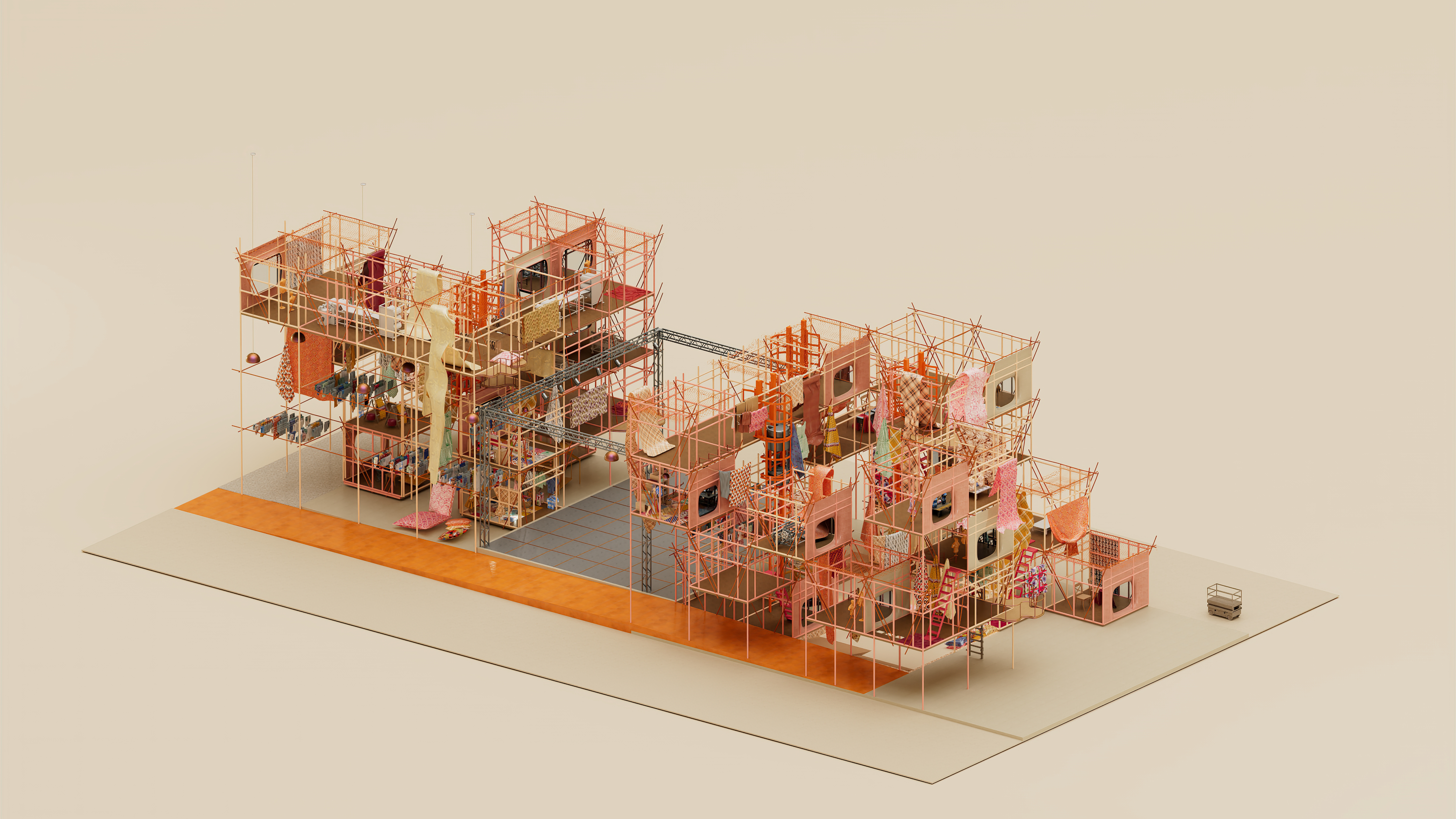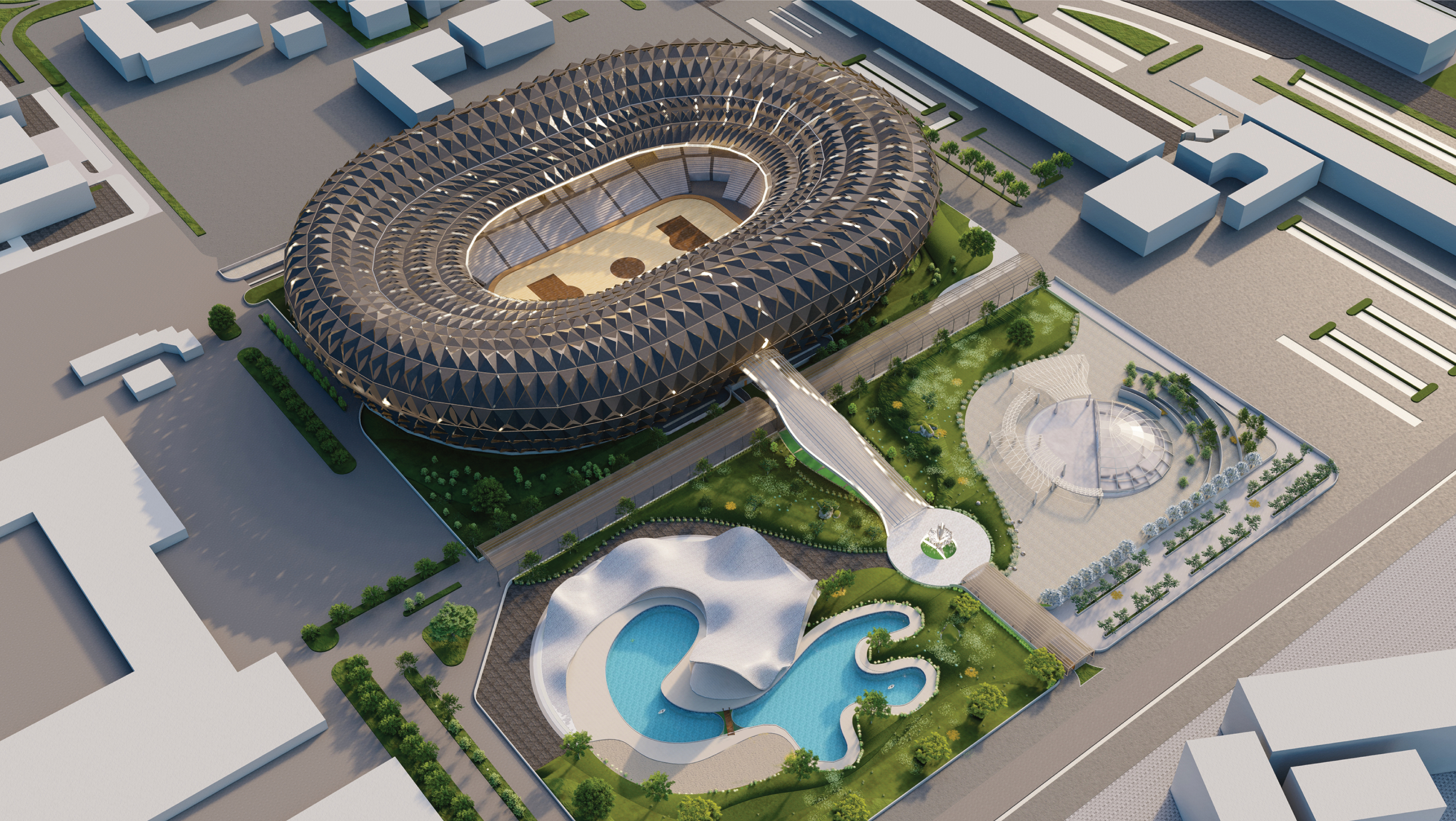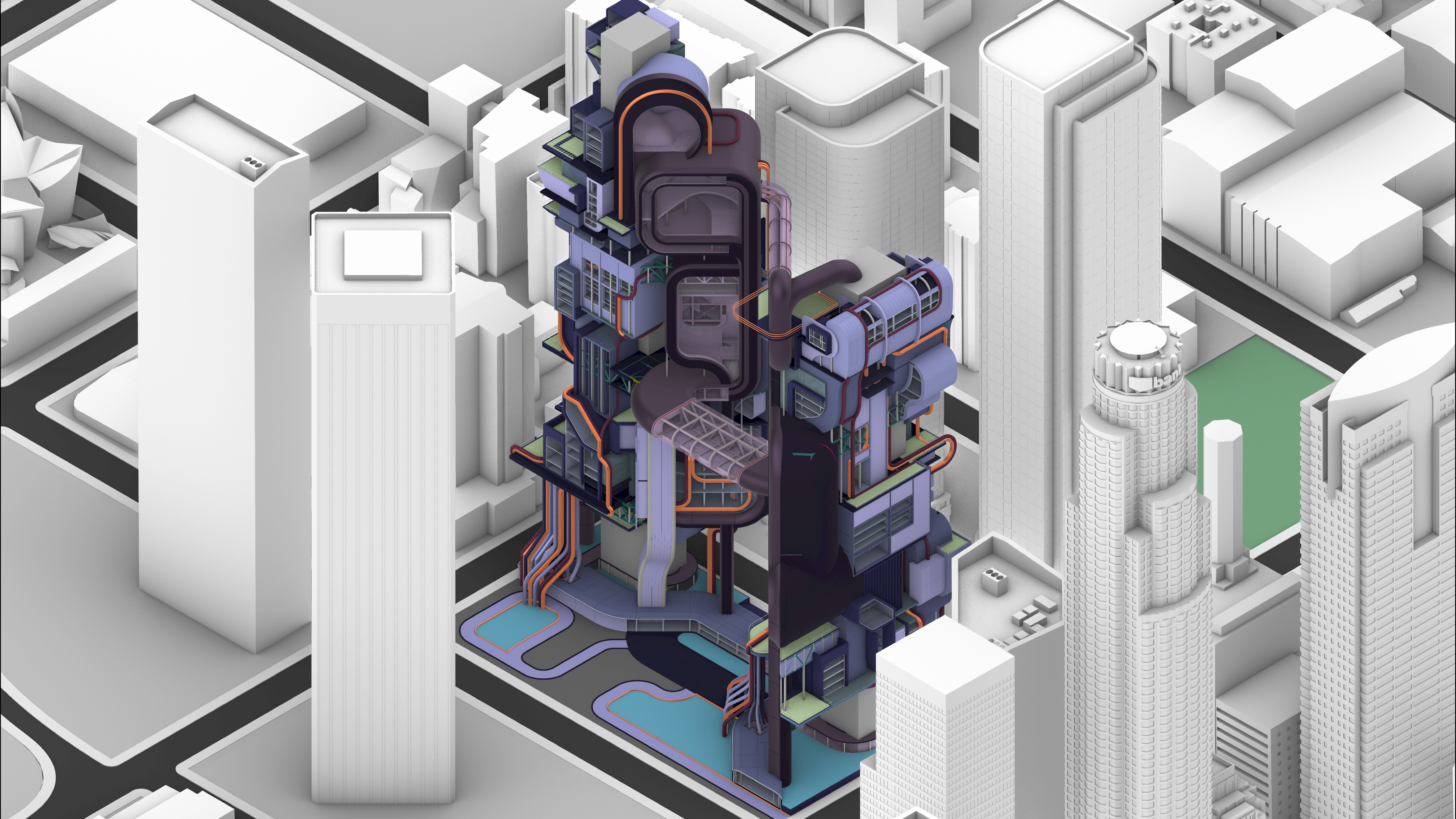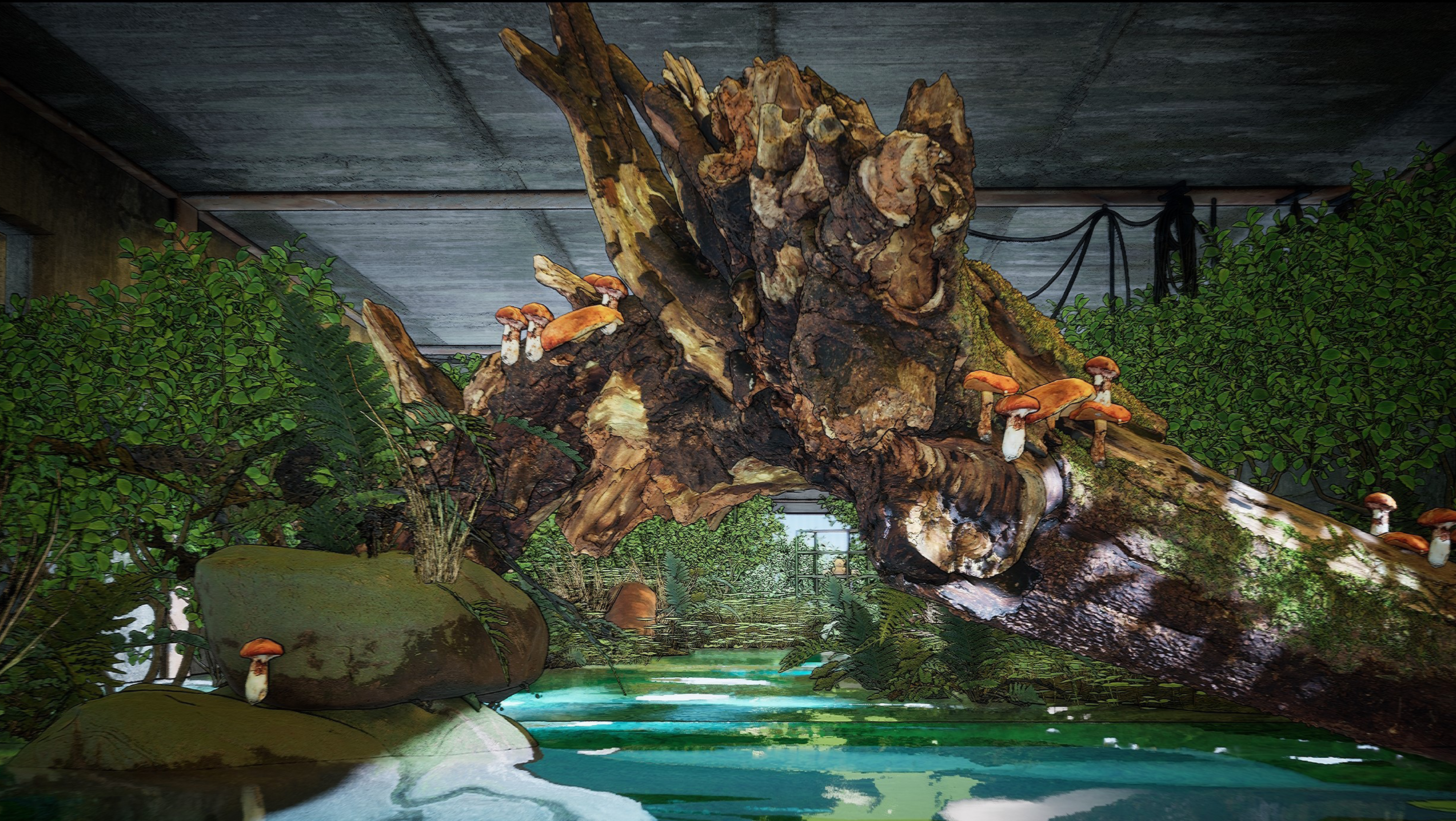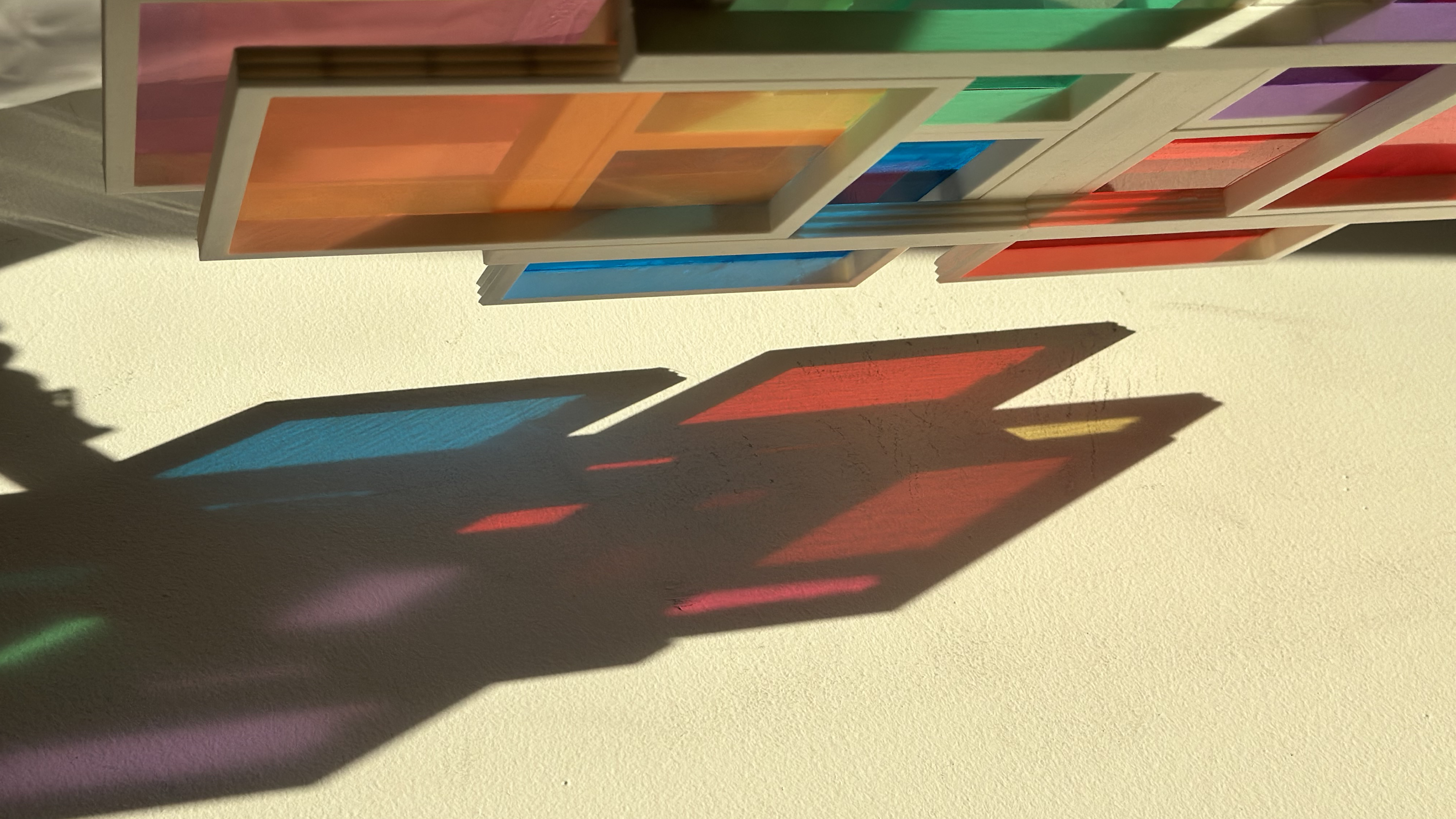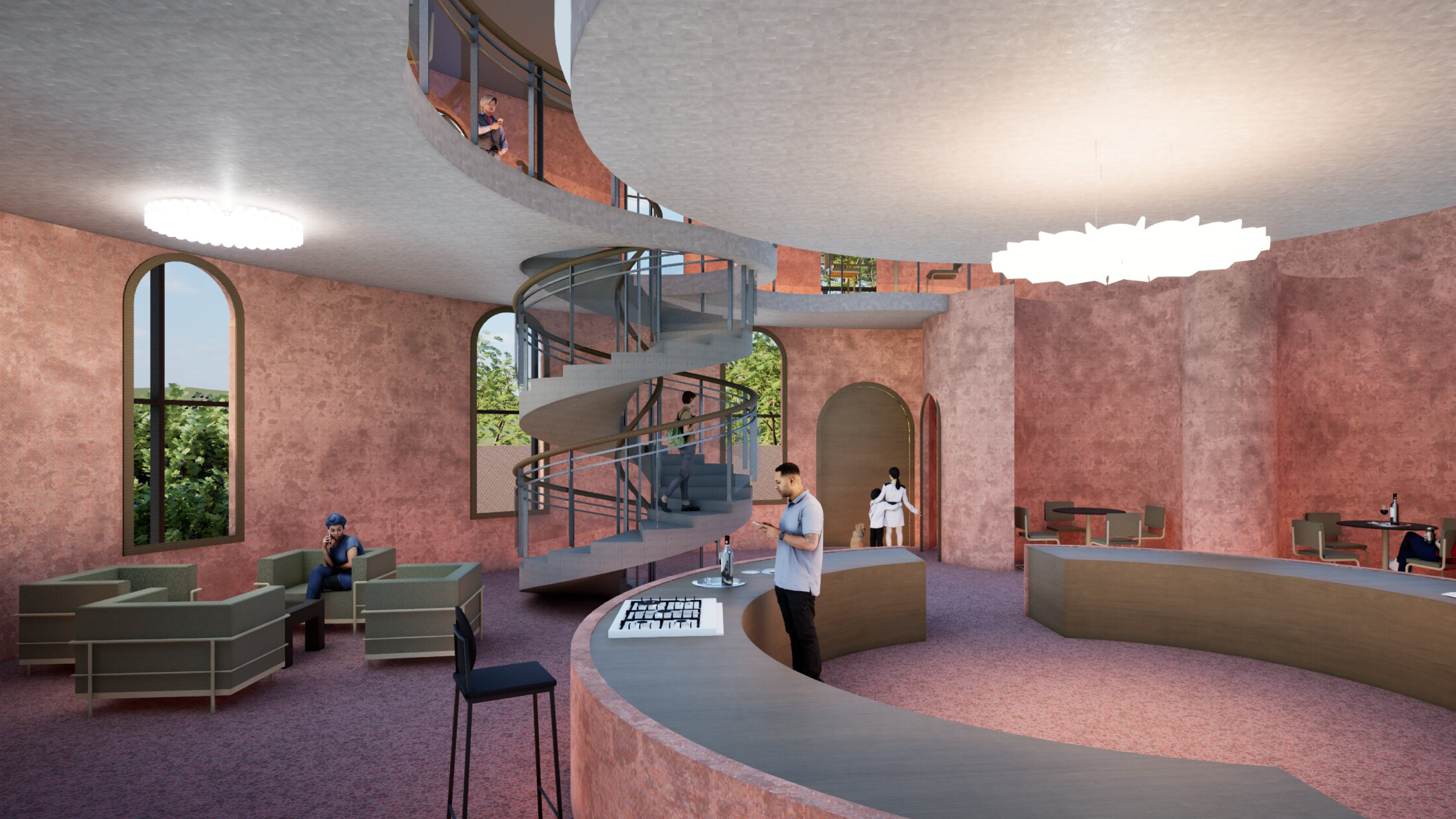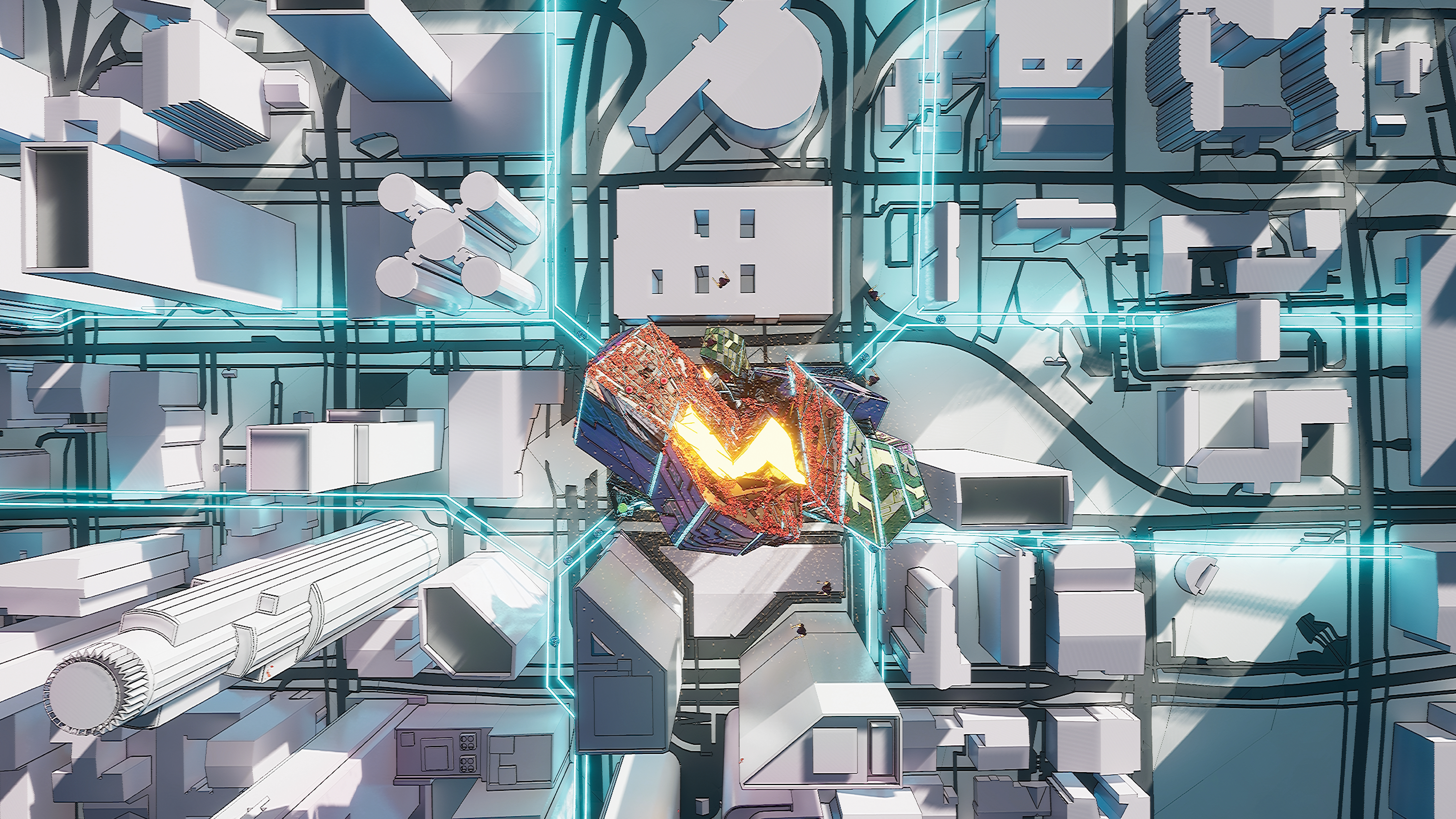The process began with developing 2D figures through painting, where I used color and shadow to evoke depth and dimension. These figures were then transformed using various mapping, wrapping, and unwrapping techniques to project them three-dimensionally onto architectural surfaces.
In the next phase, these ideas were digitally developed and applied to an existing courthouse designed in 1956 by architect Albert Criz in the Mid-Century Modern style. This shift brought forward the central question: What is ornament, and how can I effectively deploy ornamentation within a modernist context? Through this exploration, the project challenges Adolf Loos’s famously critiqued ornament as a crime, this project rejects the statement an ornament provides an opportunity to engage with the deeper layers of human experience, symbolism, and narrative and a way of life
The project aims to visually simulate public engagement and investigate the artistry, surface quality, and fluid intelligence embedded within ornamental tectonics. These elements, far from being mere decoration, play a critical role in the structural logic of a building, revealing the intrinsic qualities of ornamentation and how it can enhance and inform the design process.
Special thanks to Paresh Patel, and Gaurav Dua for the installation and Shaghayegh Ghafari for the photography
